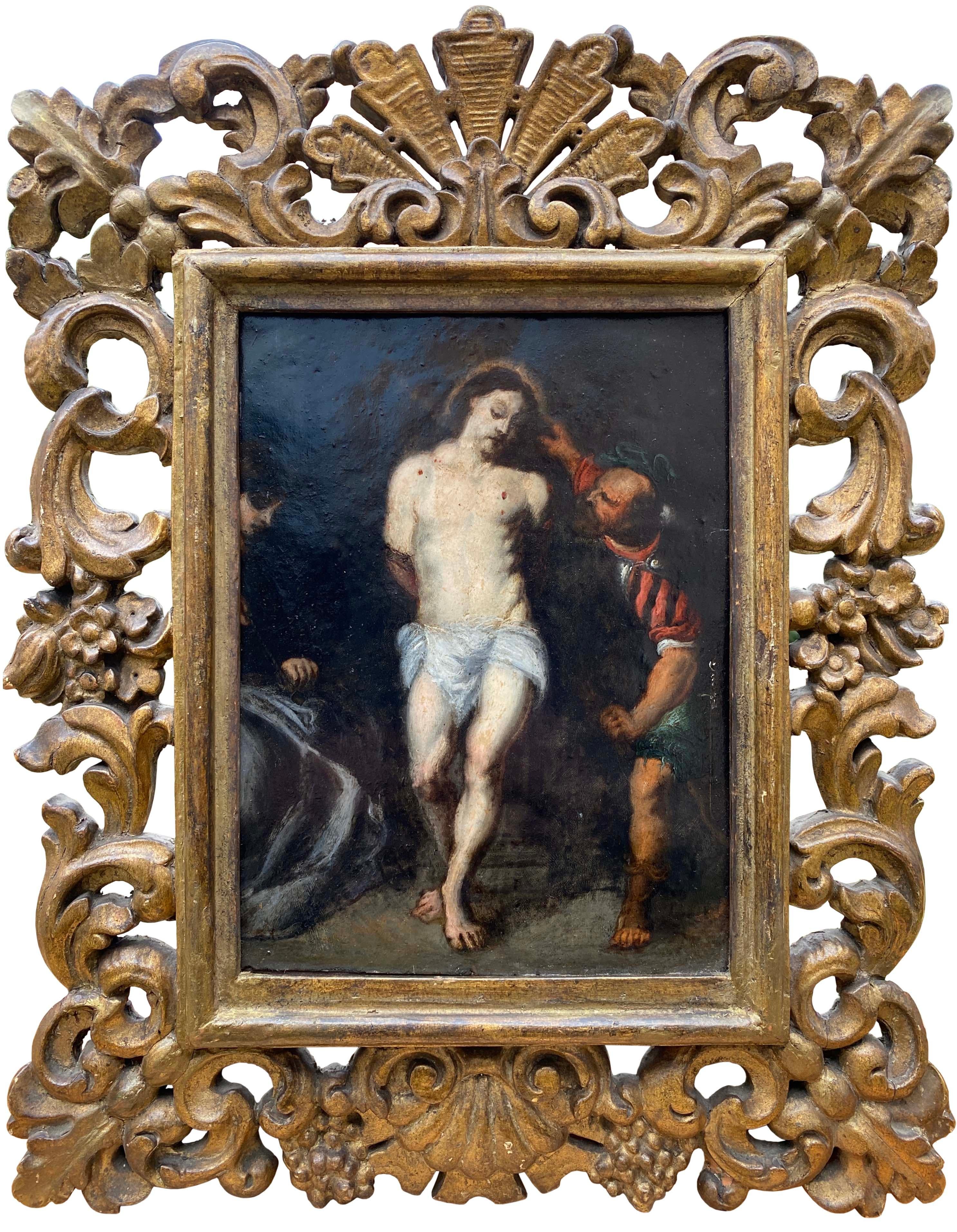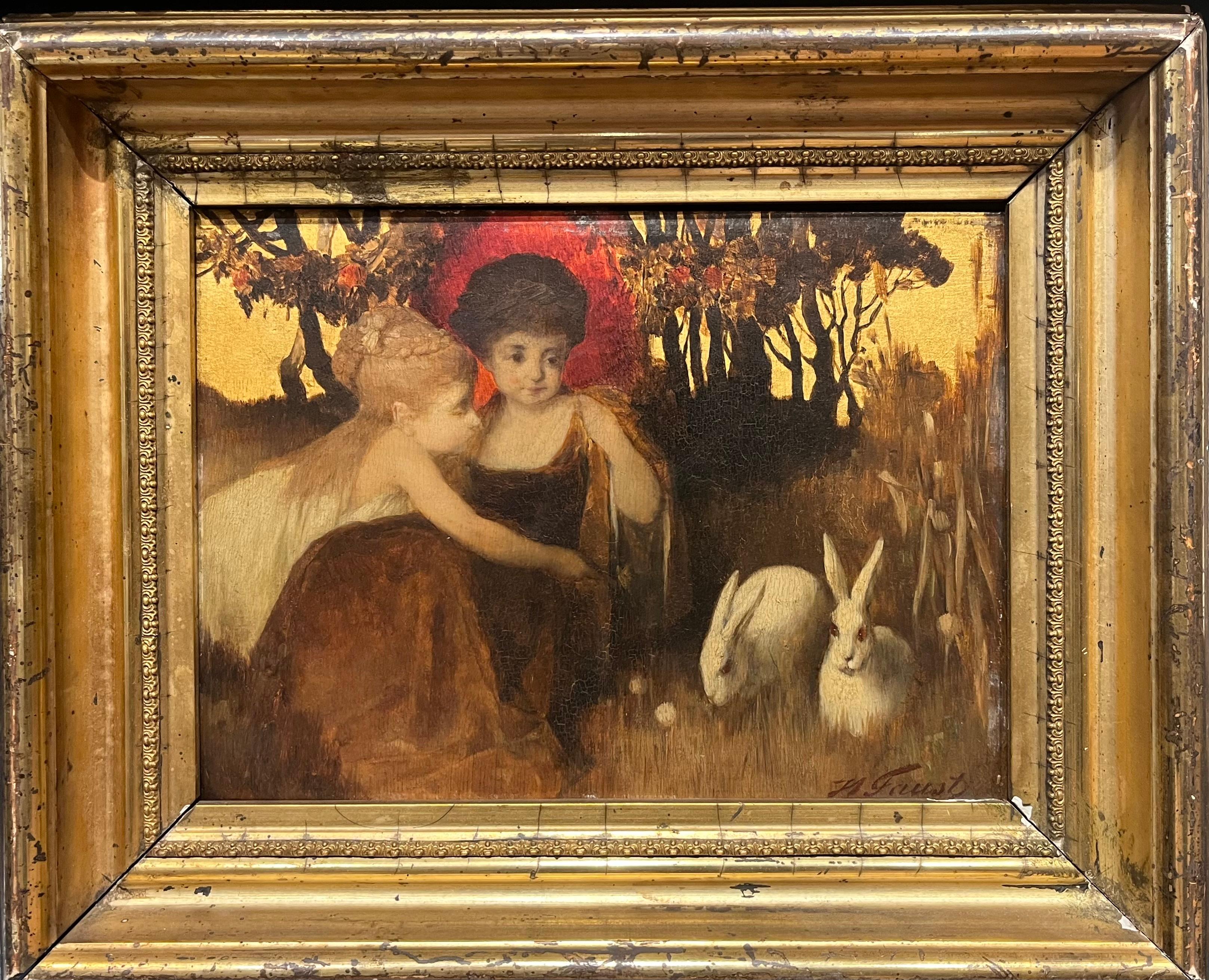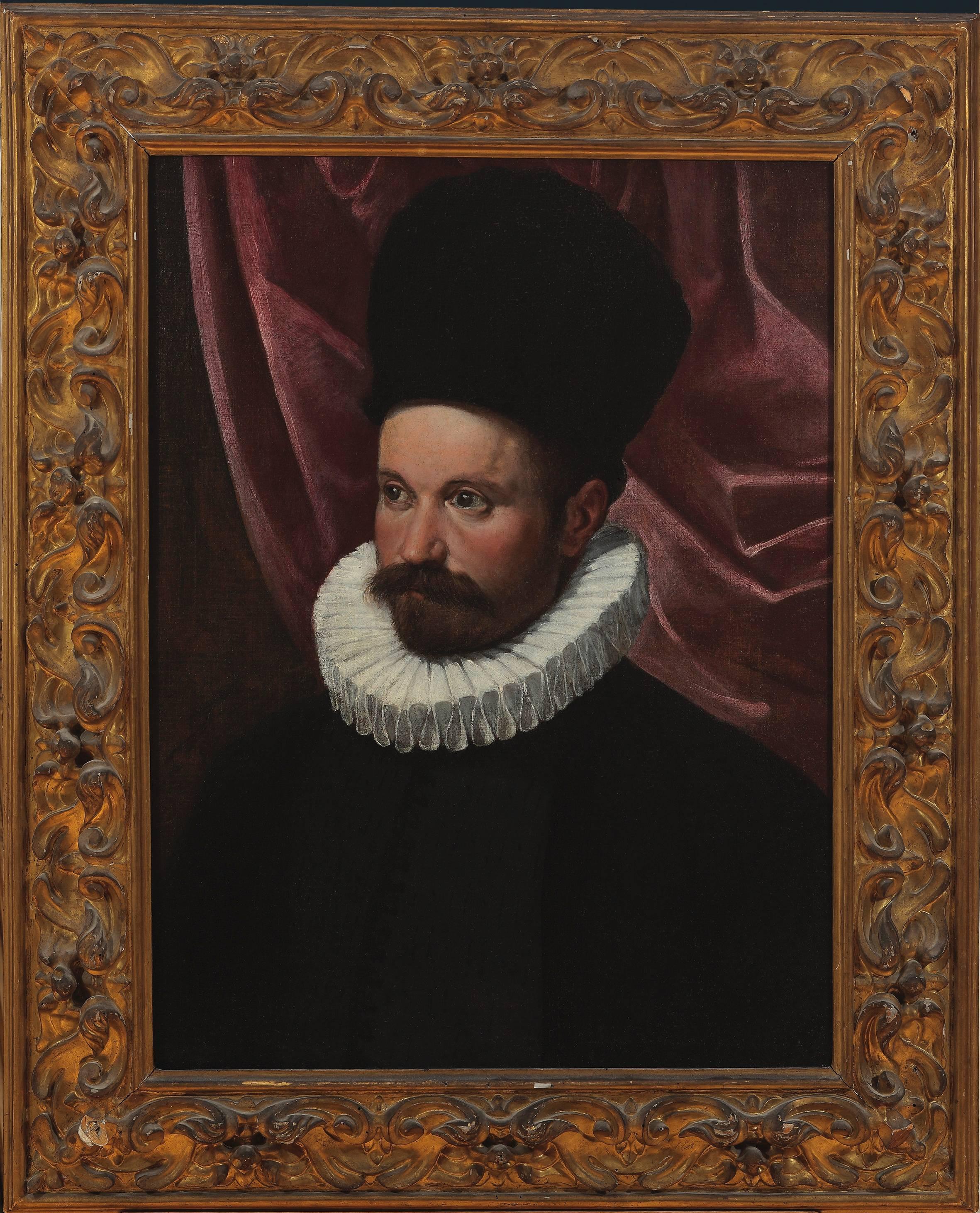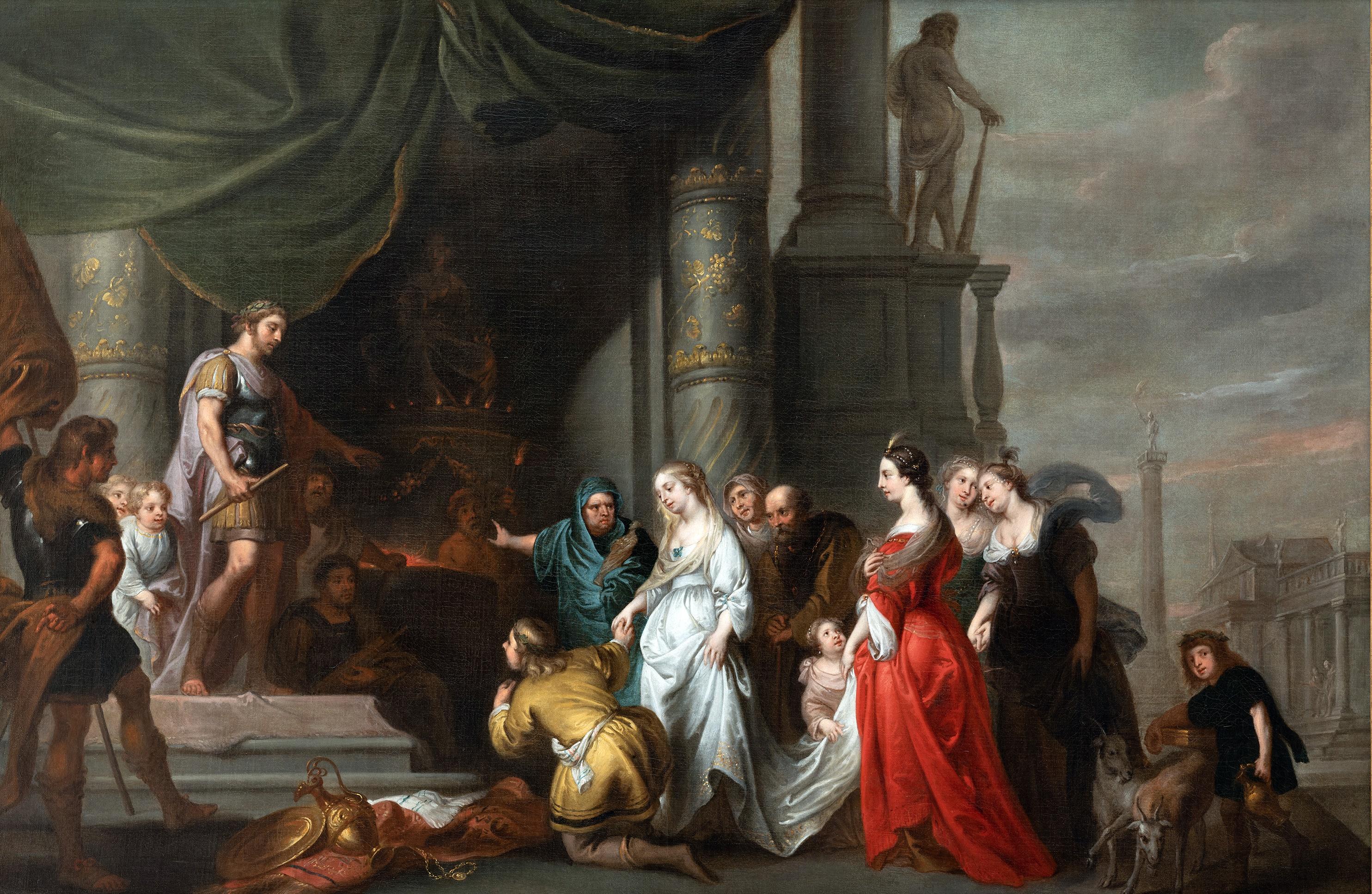Items Similar to Portrait of a Bewigged Gentleman
Want more images or videos?
Request additional images or videos from the seller
1 of 2
Vittore GhislandiPortrait of a Bewigged Gentleman1736
1736
About the Item
Vittore Ghislandi, called Fra Galgario
Provenance:
Robert L. and Bertina Suida Manning, New York, ca. 1966-1996
Private Collection, USA
Exhibited:
“Eighteenth Century European Paintings from the Collection of Robert L. and Bertina Suida Manning,” The Gallery, Dept. of Art, Duke University, Durham, 1966, no. 19.
“Baroque Portraiture in Italy: Works from North American Collections,” John and Mable Ringling Museum of Art, Sarasota, 7 December 1984 - 3 February 1985; and Wadsworth Atheneum, Hartford, 20 March - 20 May 1985, no. 25.
Literature:
John T. Spike, Baroque Portraiture in Italy; Works from North American Collections, Sarasota, 1984, pp. 92-93, cat. no. 25.
Fra Galgario is the author of some of the most astonishing portraits of the late Baroque period. Full of character and remarkable for their expressive poses, these images, usually life-size, are both dramatic and sympathetic. The present work shows the artist working on an unusually small scale, with no loss of impact. The sitter, sporting a stylish wig and an a richly decorated doublet, gazes at the viewer with a frankness and intimacy that are perhaps lost in portraits of a larger format. The tilt of his head, the turn of his body, the placement of his arm akimbo – all are subtle indications of character that underscore the personality conveyed in the depiction of the subject’s features.
Recently, James Middleton has suggested that the subject of this portrait may be the celebrated Italian contralto castrato Francesco Bernardi, called Senesino (1686-1758). Senesino began his career in Venice, but is best known as the primo uomo in George Frederic Handel’s company, the Academy of Music, in London. There he created seventeen leading roles for Handel, including those in Giulio Cesare, Rodelinda, and Orlando. He returned to Italy in 1736.
Portraits of Senesino, such as Alexander van Haecken’s print after a portrait by Thomas Hudson (Fig. 1), show a man of great physical similarity to the sitter in our portrait, with a square brow, cleft chin, and wearing an almost identical costume and wig. Van Haecken’s print is dated 1735, presumably also the date of Hudson’s portrait and the year before Senesino’s return to Italy, where Fra Galgario would have painted him.
This work comes from the distinguished Suida-Manning Collection, begun by the Austrian art historian Wilhelm Suida and continued by his daughter Bertina Suida Manning and her husband Robert Manning, both scholars in the field. The attribution of the present work to Fra Galgario was first proposed by Robert Manning and seconded by John T. Spike. It has recently been confirmed by Dr. Mina Gregori upon first-hand inspection.
- Creator:Vittore Ghislandi (1655-1743, Italian)
- Creation Year:1736
- Dimensions:Height: 3 in (7.62 cm)Width: 2.375 in (6.04 cm)
- Medium:
- Movement & Style:
- Period:
- Condition:
- Gallery Location:New York, NY
- Reference Number:1stDibs: G12060510234
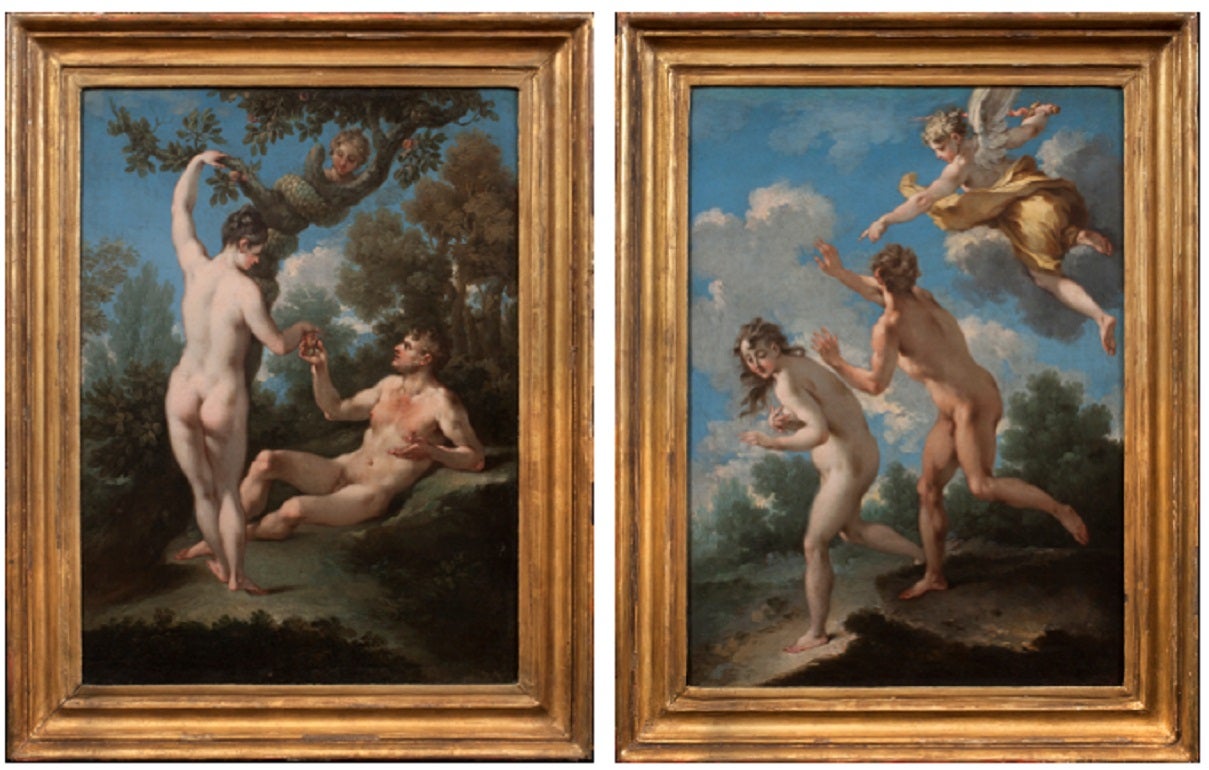
About the Seller
5.0
Recognized Seller
These prestigious sellers are industry leaders and represent the highest echelon for item quality and design.
Established in 1997
1stDibs seller since 2012
17 sales on 1stDibs
Typical response time: 11 hours
- ShippingRetrieving quote...Ships From: New York, NY
- Return PolicyThis item cannot be returned.
More From This SellerView All
- Portrait of a GentlemanBy Ippolito Scarsella (Scarsellino)Located in New York, NYProvenance: Suida-Manning Collection, New York Private Collection Exhibited: Venetian Paintings of the Sixteenth Century, Finch College Museum of Art, New York, October 30-December 15, 1963, no. 31. Veronese & His Studio in North American Collections, Birmingham Museum of Art, Oct. 1-Nov. 15, 1972, and Montgomery Museum of Fine Arts, Dec. 5-Dec. 31, 1972 Literature: Robert L. Manning, A Loan Exhibition of Venetian Paintings of the Sixteenth Century, exh. cat. New York 1963, cat. no. 31ill., as by Veronese Stephen Clayton and Edward Weeks, eds., introduction by David Rosand, Veronese & His Studio in North American Collections, Birmingham 1972, as by Veronese, p. 38 ill. Terisio Pignatti, Veronese, Venice 1976, I, p. 199, cat. no. A225, II, fig. 908, as attributed to Veronese Terisio Pignatti and Filippo Pedrocco, Veronese; catalogo completo dei dipinti, Florence 1991, no. 54°, as attributed to Veronese. Terisio Pignatti and Filippo Pedrocco, Veronese, Milan 1995, II, pp. 517-518ill., cat. no. A 56, under attributed paintings, by Veronese and workshop) John Garton, Grace and Grandeur; The Portraiture of Paolo Veronese, London-Turnhout 2008, p. 237, fig. 77, cat. no. R16, as workshop of Veronese. Scarsellino’s art is widely regarded as critical link between the Renaissance and the Baroque styles in Emilian painting; not only was he an important transmitter of the heritage of the Renaissance, but he was also open to innovative ideas, and was one of the earliest to experiment with the trend to naturalism that would become fundamental to art of the new century. Born around 1550, he received his earliest training from his father Sigismondo, an architect and painter; it was probably while working at his father’s side as a youth that he acquired the nickname Scarsellino, or “little Scarsella”. After absorbing the principles of his art in Ferrara and Parma, he went to Venice in 1570, staying for four years and working in the shop of Veronese. In the following decade, his art —especially in terms of its piety and its development of landscape— demonstrates a strong sympathy with that of the Carracci, with whom he worked in 1592-1593 at the Palazzo dei Diamanti in Ferrara. Maria Angela Novelli and later Alessandra Frabetti both propose that Scarsellino traveled to Rome, although such a trip has not been documented; if he did travel to Rome, it probably would have occurred during the years that Scarsellino’s colleagues Agostino and Annibale Carracci were there, that is, beginning in 1595 and until 1609. The last decades of Scarsellino’s career again involve stylistic experimentation, this time in a manner that would bring his work very close to the progressive figurative naturalism of Carlo Bononi and prepare the way for Guercino. The present portrait of a distinguished gentleman had been long thought to be by Paolo Veronese and was in fact attributed to him by such distinguished connoisseurs as Adolfo Venturi and Wilhelm Suida. The portrait’s style is, however, distinct from Veronese’s, although clearly indebted to it, and the attribution to the young Scarsellino is wholly convincing. The painting would then date from the 1570s – a date confirmed by the costume the subject wears. The puffed hat that appears in the painting had a rather short-lived vogue in the early 1570s. One sees it in Giambattista Moroni’s Portrait of Count...Category
18th Century and Earlier Baroque Portrait Paintings
MaterialsCanvas, Oil
- Head of a Classical Poet (Socrates?)By Pier Francesco MolaLocated in New York, NYProvenance: Possibly Antonio Amici Moretti, Rome, 1690 Roy Clyde Gardner, Union, Mississippi, 1970s until 2004; by whom given to: Mississippi Band of Choctaw Indians, 2004-2010 Lit...Category
17th Century Baroque Paintings
MaterialsCanvas, Oil
- Three AngelsBy Domenico Piola the ElderLocated in New York, NYProvenance: Robert L. and Bertina Suida Manning, New York, until 1996 Private Collection, USA One of the leading artists in Genoa during the second half of the seventeenth century, Domenico Piola came from a successful family of artists, renowned for their many illusionistic ceiling programs throughout Genoese churches and palaces. A prolific draughtsman and painter, Domenico oversaw an extremely productive studio. In addition to his collaborations with numerous other artists, Domenico also provided many designs for book illustrations and prints that circulated throughout Europe, earning him international exposure and high acclaim in his own day. As Dr. Anna Orlando has indicated (written communication), the present work is an early work by Piola, datable from the late 1640s. At this time the young artist came strongly under the influence of Castiglione and Valerio Castello, while admiring the works of Giulio Cesare Procaccini. Piola’s works from this period are exuberant and fluid, and the artist’s love of portraying children is evident from the angels and putti that populate both his altarpieces and more intimate paintings. The present work depicts three angels...Category
17th Century Baroque Figurative Paintings
MaterialsOil, Canvas
- Portrait of a ManLocated in New York, NYProvenance: with Leo Blumenreich and Julius Böhler, Munich, 1924 Dr. Frederic Goldstein Oppenheimer (1881-1963), San Antonio, Texas; by whom given to: Abraham M. Adler, New York, un...Category
16th Century Old Masters Portrait Paintings
MaterialsOil, Panel
- Portrait of Laura Keppel, later Lady SouthamptonBy Sir John HoppnerLocated in New York, NYInscribed, upper left: “Miss Laura Keppel” Provenance: Commissioned from the artist and by descent in the Keppel family estate, Lexham Hall, Norfolk, to: Major Bertram William Arnol...Category
18th Century Paintings
MaterialsCanvas, Oil
- Saint Martin de PorresLocated in New York, NYProvenance: Private Collection, New York, until 2022. Martín de Porres was born in Lima in 1579, the illegitimate son of a Spanish-American father, J...Category
Late 18th Century Paintings
MaterialsCanvas, Oil
You May Also Like
- Portrait of a Gentleman, Halung, Court Painter Schildbach, Gotha, Convex CopperLocated in Greven, DEChristian Schildbach was a very talented artist with his own style. Art painter in Plauen, then court painter in Dresden; around 1706 art painter in Vienna, also active in Bamberg (...Category
18th Century Baroque Portrait Paintings
MaterialsCopper
- Self Portrait of Schildbach, Court Painter Schildbach, Gotha, Convex CopperLocated in Greven, DEChristian Schildbach was a very talented artist with his own style. Art painter in Plauen, then court painter in Dresden; around 1706 art painter in Vienna, also active in Bamberg (...Category
18th Century Baroque Portrait Paintings
MaterialsCopper
- The Flagellation of Christ, Old Master, Flemish School, Oil on copperLocated in Bruges, BEThe Flagellation of Christ Old Master Flemish School 17th century Medium: Oil on copper Dimensions: Image size 22 x 17 cm, frame size 39 x 31 cmCategory
17th Century Baroque Portrait Paintings
MaterialsCopper
- Oil Portrait of Girls with RabbitsLocated in Fredericksburg, VAHeinrich Faust is a German genre painter of the late 19th century. He painted dramatic interpretations of everyday occurrences such as families and grou...Category
Late 19th Century Baroque Figurative Paintings
MaterialsGold Leaf
- Continence of Scipio, Erasmus Quellinus, School Rubens, Baroque Art, Old MasterBy Erasmus Quellinus the YoungerLocated in Greven, DEErasmus Quellinus The Continence of Scipio Oil on Canvas The painting is included in the Catalogue Raisonné of the artist. The Roman commande...Category
17th Century Baroque Figurative Paintings
MaterialsOil, Canvas
- Baroque English Portrait of boy and his dogBy (Follower of) Sir Godfrey KnellerLocated in San Antonio, TXLate 17th/early 18th century portrait of a boy. This portrait is in the manner of Sir Godfrey Kneller, however it lacks a signature and documentation. It would not look out of place in an English country house. The Portrait is of a young English boy...Category
Early 18th Century Baroque Portrait Paintings
MaterialsOil
Recently Viewed
View AllMore Ways To Browse
18th Portrait Gentleman
18th Century Gentleman Portrait
18th Century Portrait Of Gentleman
18th Century Portrait Of A Gentleman
George Frederic
Portrait Gentleman Italian
Portrait Of A Gentleman Italian
Large Sporting Oil Painting
Antique Handels
Eighteenth Century Oil Portraits
L Wilhelm
18th Century Oil On Copper
John Fig
Antique Dr Scale
Antique Durham
Giulio Cesare
Man Wig
Custom Framing
